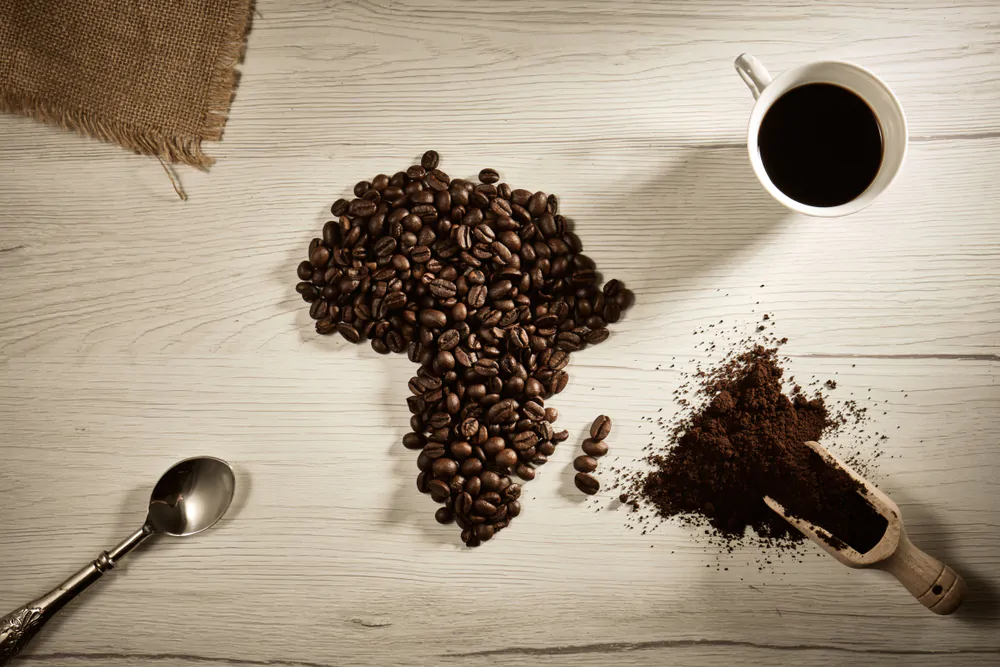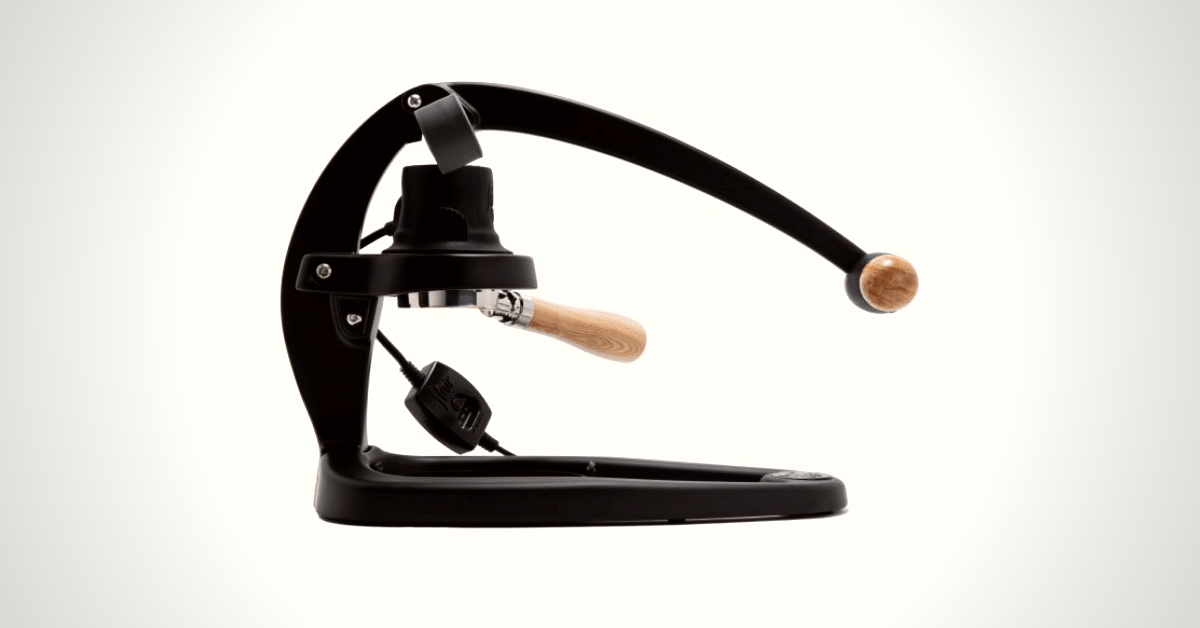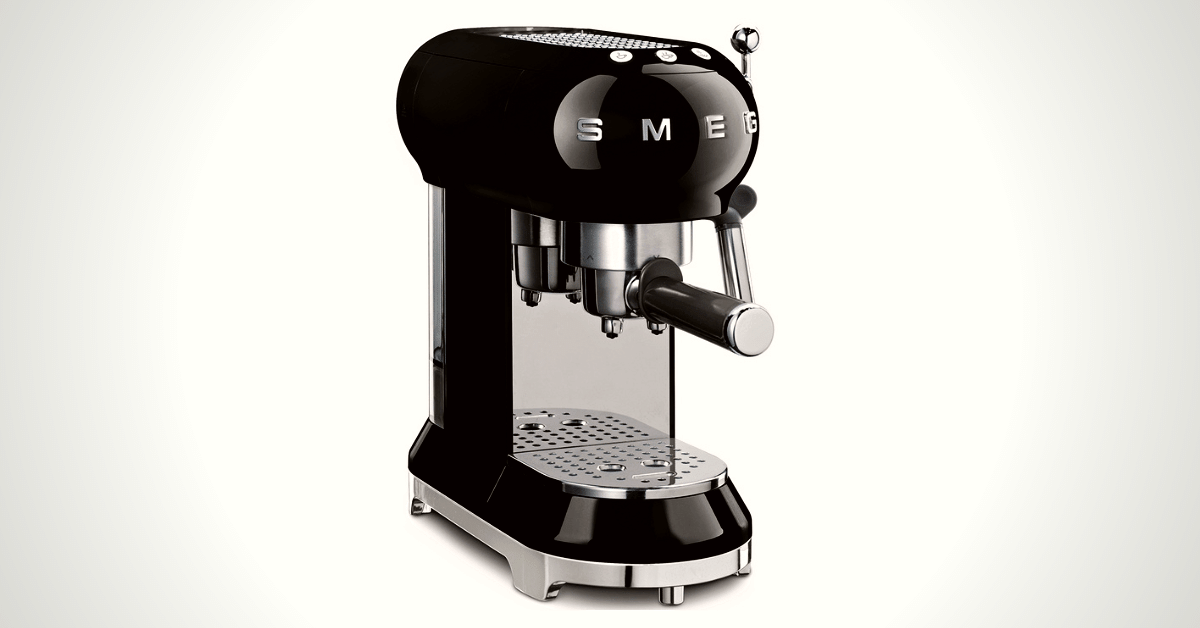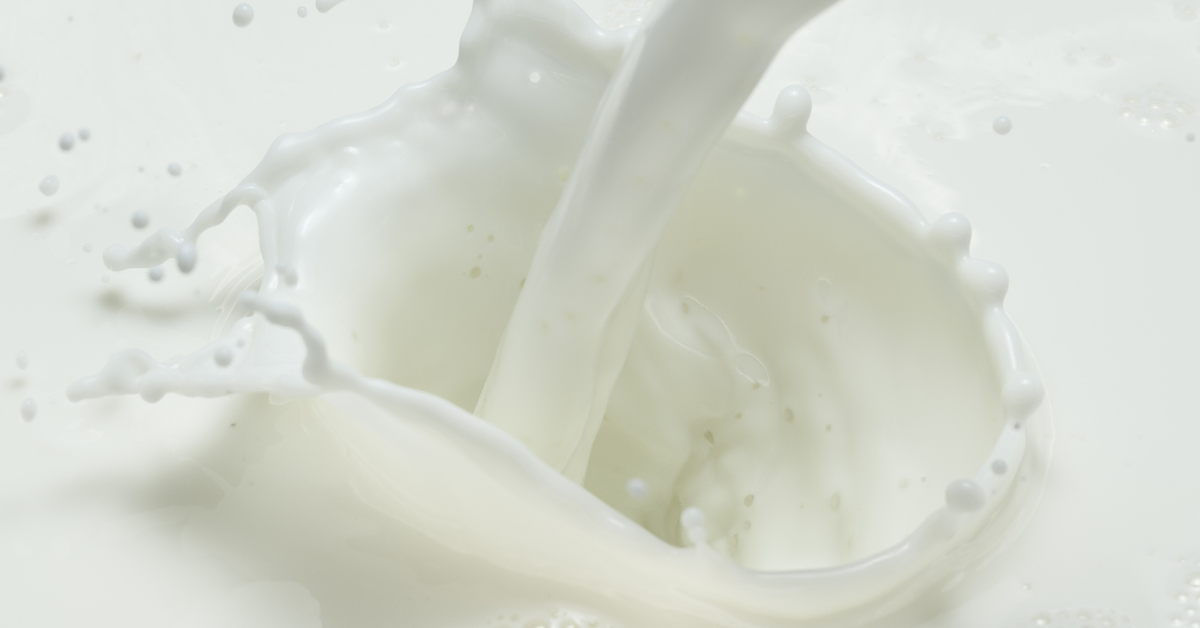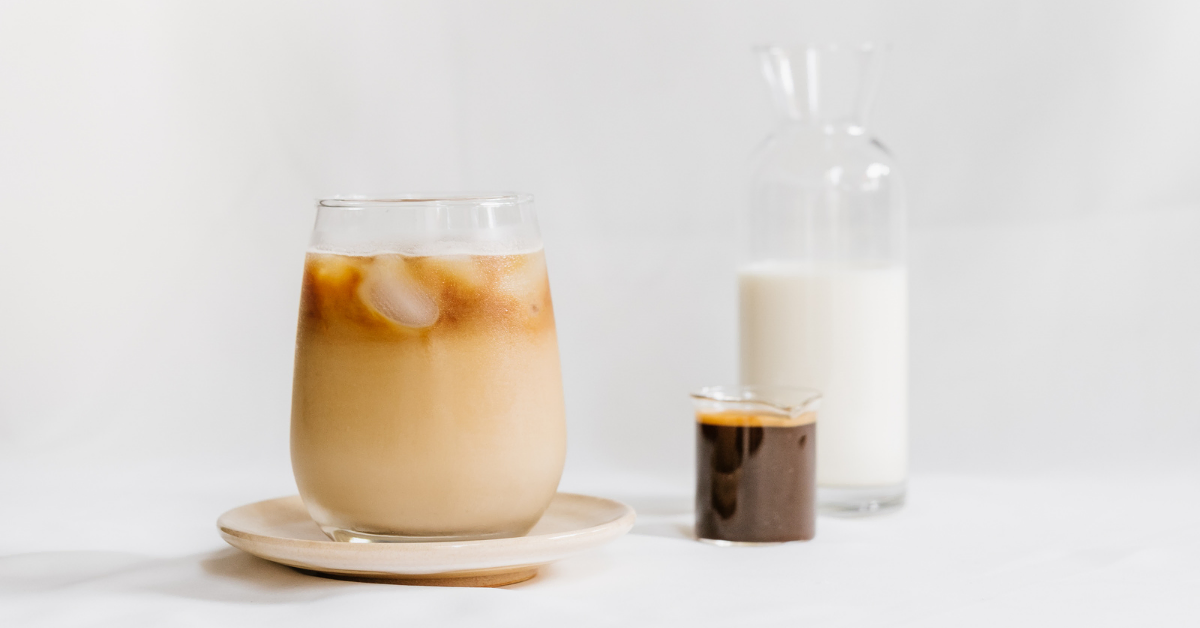South America is known for growing some of the world’s best-tasting coffee beans. In one article, we’ve gathered everything to know about coffee from this continent.
South America is the largest coffee-producing continent today.
South American coffee enjoys a well-deserved popularity – it’s sweet, flavorful, and simply delicious. From casual drinkers to coffee connoisseurs, anyone could enjoy the flavor profile this continent brings to the table.
And regardless of what kind of coffee drinker you consider yourself to be, South American coffee definitely worth a try.
But where to start?
After a deep dive into the world of South American coffees, I gathered everything you need to know about it. In this article, we’ll go over the best South American coffee beans and the regions they grow in.
Let’s dive straight in.
South America and Coffee: A Special Relationship
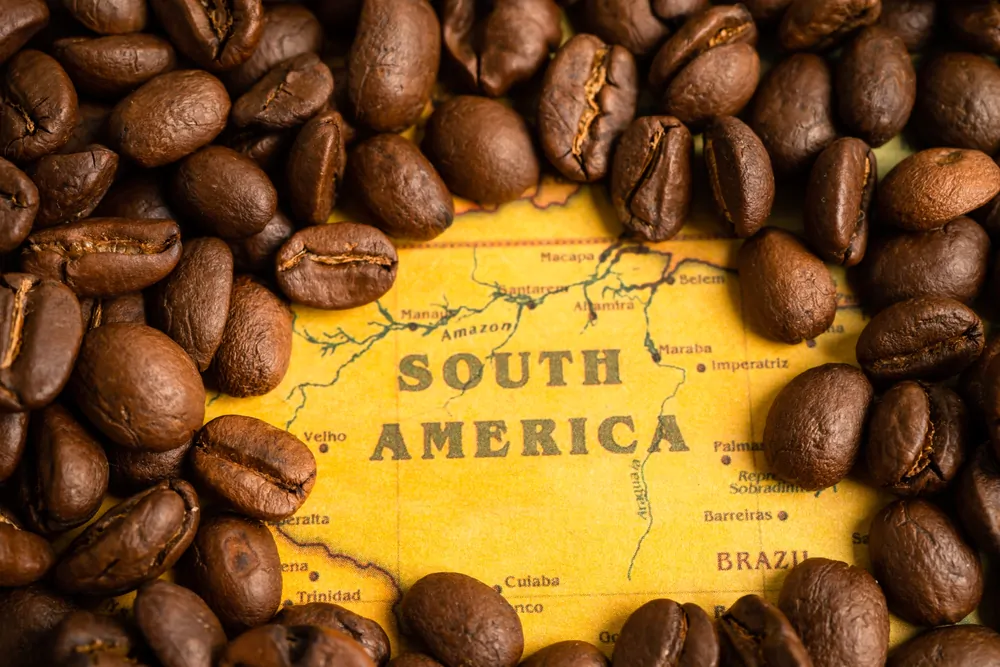
Today, South America accounts for around 60% of the world’s coffee supply. Two countries from the continent, Brazil and Colombia, are in the top three coffee-producing countries in the world.
Of course, this huge coffee industry didn’t develop overnight.
The first coffee tree that arrived on the continent was the Arabica plant in 1718. The Dutch arrived with the coffee tree in Martinique, which they believed could be the “next Java for growing coffee.”
A decade later, Jesuit priests brought the plant to Colombia and Venezuela, where it quickly became a widespread crop.
The story of how the first coffee bean arrived in Brazil is an interesting one. The legend has it that Portugueze officer Francisco de Melho Palheta stole it from French Guiana, where he was sent to solve a border dispute.
At the time, the French were prohibited from trading coffee seeds with Brazilians or Portuguese. But Palheta developed a relationship with the French governor’s wife. Enchanted by the officer, she gifted him a bouquet of flowers with coffee seedlings hidden inside.
That was enough to kick off the coffee industry in the country, although it only gained momentum after the independence in 1822. And by mid 19th century, Brazil became the largest coffee producer in the world – the title it still holds today.
Other South American countries didn’t have such quick commercial success. In most cases, the boom in coffee production happened in the 1920s. During this decade, the British settlers started growing coffee to satisfy the ever-increasing coffee demand in Europe.
However, the demand was here today and gone tomorrow. Once WWII started, South America lost about 40% of its market, which had a huge hit on the economy.
Luckily, the US was quick to step in. With an even bigger coffee demand, the country saw the potential for direct trade, which was beneficial to both sides. The rest – is history. Today, the US is the largest importer of South American coffee, mostly from Colombia and Brazil.
As you can see, coffee plays a major role in the South American economy. But it’s so much more than that. Coffee has become a major source of income for working families and also an integral part of South American culture.
Flavor Profiles of South American Coffee
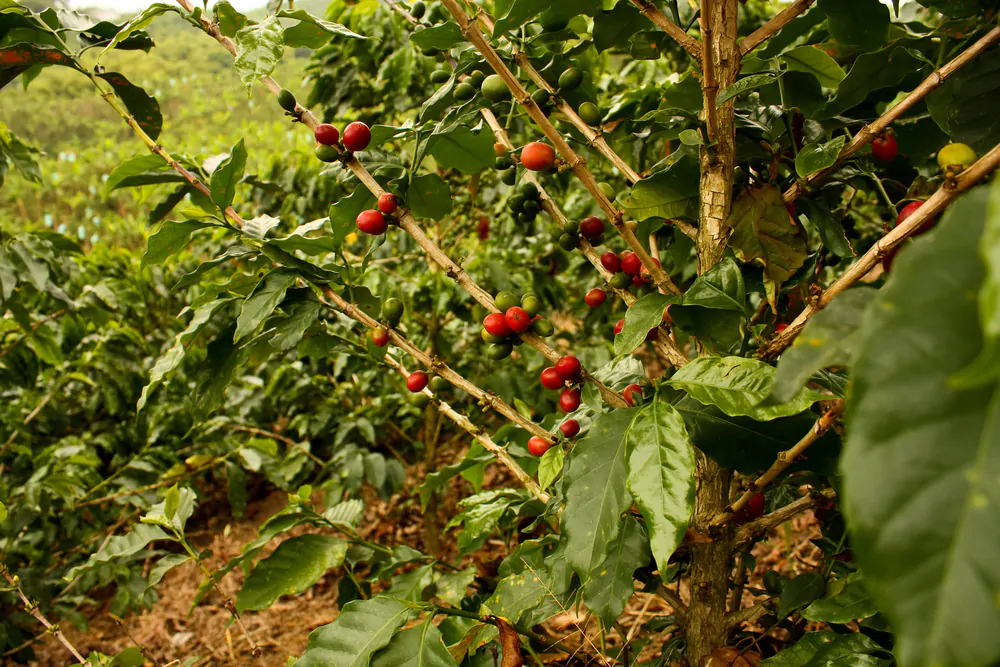
Ever heard of wine terroir?
Well, coffee shares the same concept.
Basically, terroir describes the environmental factors that affect a crop’s unique flavor. These factors include:
- Altitude
- Climate
- Soil type
- Shade
- Rainfall
Each of them affects the overall flavor in some way. That’s why regions with different altitudes and climates will give you a different-tasting cup of coffee.
Most of the coffee regions in South America are situated on rich, porous soil, growing in moderate climates and generous rainfall.
As a result, you can notice a certain pattern in the flavor, which is slightly sweet and well-balanced, with a hint of chocolate.
Other prominent notes can differ between low-altitude and high-altitude coffee.
Coffee grown at a high elevation (like in Colombia) is more full-bodied, with medium acuity and notes of caramel. Low-altitude coffee (like in Brazil) has a lighter body, lower acidity, and a nutty base tone.
In general, South American coffee can be distinguished from coffee produced on other continents. Regardless of the region, coffee from this continent is rounded and sweet, with none of the bitterness.
The most prominent notes of South American coffee range from chocolaty to nutty, which is generally well-liked among both casual drinkers and coffee connoisseurs. In comparison, African coffee is more fruity and floral. Asian coffee, on the other hand, has deeper notes compared to South American. Typical Asian coffee is earthy, less acidic, and more bitter.
Major South American Coffee-Producing Countries
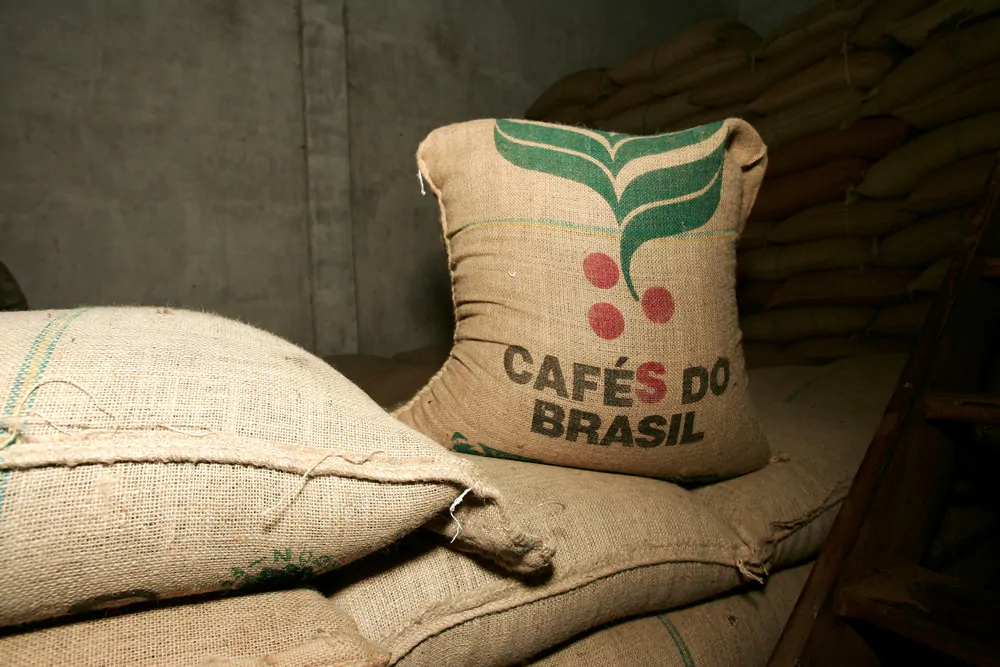
While the continent consists of twelve countries, only half have a developed coffee industry. These countries are:
- Brazil
- Colombia
- Bolivia
- Peru
- Ecuador
- Venezuela
So, what do they all have in common?
Well, they all have a hot and humid climate, the right altitude, and rich, volcanic soil. But of course, each of these countries has its own microclimate, which creates a unique terroir for each region.
Brazil
Starting with the world’s largest coffee producer, Brazil supplies about 60% of the world’s coffee. Except for Rondonia, all other coffee regions are situated in the southeastern states, which have the ideal climate for growing coffee.
Still, most parts of these regions have an elevation of about 3,600 feet, which is relatively low for growing coffee. What this means is that a good portion of Brazilian coffee is considered lower-grade.
This is not to say that you can’t find premium beans coming from this country. Certain regions do have high enough elevation to produce the so-called High Grown Coffee, which is considered gourmet.
The most popular Arabica varietals grown are Typica, Caturr, Catuai and Yellow Bourbon. But what’s impressive is that this country also grows Robusta. In fact, it’s the second largest producer of these coffee beans.
Regardless of the variety, Brazilian coffee tends to be nutty and chocolaty, with low acidity and mild sweetness. The flavor profile is round but not too complex, ideal for darker roasts.
Brazilian coffee is dry-processed, thanks to the consistent dry season with ideal temperatures.
Colombia
Colombia is the third largest coffee producer, accounting for 12% of the world’s coffee. Speaking in numbers, this country produces over 760 thousand metric tons of coffee a year.
Colombia has five main zones and as many as 19 sub-regions for growing coffee. And with so many different regions, you can expect a huge diversity in flavor profiles.
In the north, coffee is grown under a thick shade lower in the mountains. As a result, it’s also low in acidity but has a richer body. The southern region has a higher altitude and distinct dry and wet seasons. Such terroir gives a more complex and highly acidic cup of coffee.
Regardless of the region, Colombian coffee is generally very easy to drink. That’s why it’s often added to coffee blends to smooth out the prevalent notes.
In Colombia, coffee is typically wet-processed and machine-dried, as drying in the sun can be tricky due to abundant rainfall.
Bolivia
While Bolivia is only the 36th largest coffee producer in the world, the country is still known for its coffee.
Coffee is grown at an elevation above 4,000 feet, which allows it to qualify as Strictly High Grown. At such high altitudes, beans develop more slowly, which gives them a fuller and more pronounced flavor profile.
Bolivian coffee is generally known for being sweet and bright. Prominent notes range from chocolate and hazelnut to tangerine and apricot.
Like Colombian coffee, Bolivian coffee is also usually wet-processed, then dried using a machine.
Peru
Peru is well situated at the 9th spot on the list of the world’s largest coffee producers.
The three prominent growing regions are located in the Andes, on the easter slopes:
- Chanchamayo
- Amazonas
- San Martin
Around 70% of the crops consist of the Typic varietal, while Caturra makes up for another 20%.
Peruvian coffee is known for its light body and intense brightness. It’s slightly nutty and chocolaty, with a prominent aroma.
Peruvian coffee is mainly wet-processed, although dry-processing is used in certain regions.
Ecuador
Ecuadorians are heavy coffee drinkers, so a good portion of the coffee production is consumed in-country.
Ecuadorian coffee came to fame for growing Robusta beans suitable for instant coffee. But today, the country grows both Arabica as well. Typica, Bourbon, and Caturra are the most common varietals.
So, how does Ecuadorian coffee taste?
It’s quite complex due to the high elevation it grows at. It’s also creamy, sweet, and fruity, with bright acidity.
Since rainfall is scarce in Ecuador, dry processing is the main method used. Instead of using machines, coffee beans are spread in the sun to dry.
Best South American Coffee Beans
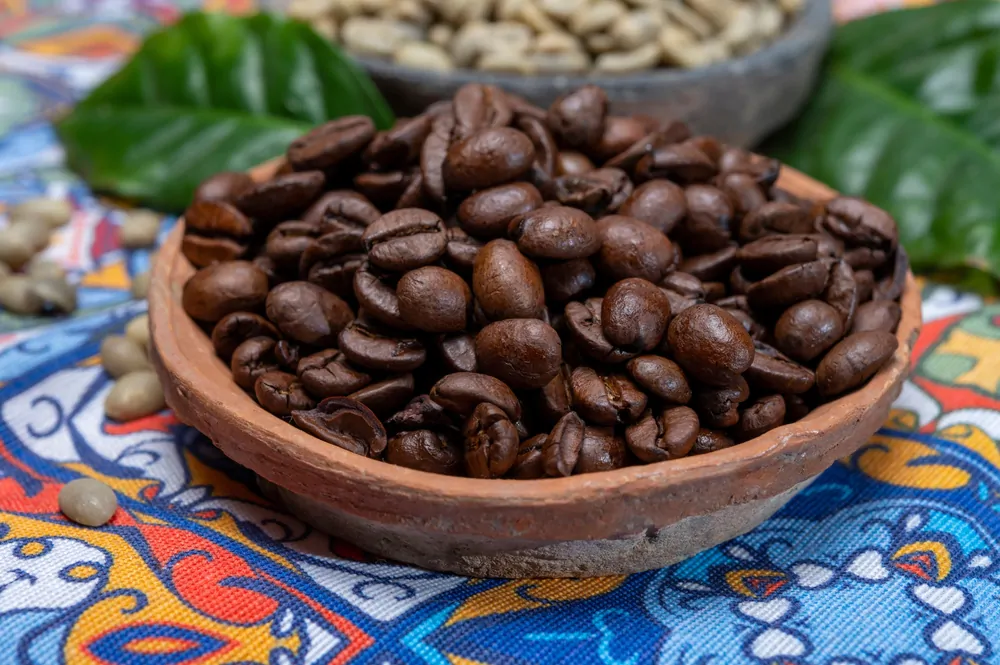
With so much coffee produced on the continent, it’s clear not every bean is of the same quality. And really, certain South American coffee beans really stand out for their flavor and unique qualities.
1. Peru Cajamarca Microlot
When it comes to Peruvian coffee, there’s something so unique about one coming from the Cajamarca region.
Each farm in this region spawns on just 5-7.4 acres, and each farm has its own microclimate, which gives a unique touch to the coffee flavor.
This Lifeboost Luxe coffee comes from one such micro-lot. The unique terroir is responsible for the bright acidity and delicate sweetness of this coffee. It’s quite fruity, with prominent notes ranging from berries and cherries to nuts and cocoa.
2. Colombia Supremo
Highest-grade Colombian coffee, Supremo is grown in the high plains of the Andes. Volcanic soil, cool climate, and elevations above 3,000 feet are responsible for a fully developed character.
Supremo has a medium to full body, slight acidity, and a smooth aftertaste. The coffee is sweet, with prominent notes of chocolate, nuts, and caramel.
Volcanica Coffee offers medium-roasted Supremo coffee, which is bittersweet and coats your palate with a nutty finish.
3. Brazil Cerrado
Cerrado region is situated at an altitude of just 2,700 feet above sea level. However, the semi-humid tropical climate creates the perfect conditions for growing coffee, even at a lower altitude.
The region itself is huge and has good output, so it provides large quantities of coffee at regular intervals.
The three most commonly grown varietals are Mundo Novo, Red Catuai, and Yellow Catuai. They’re often grown on the same farm, which is why adding them to the same bag still counts as “single-origin.”
But given they’re growing in the same geographical conditions, the beans will have similar flavors, regardless of the varietal.
Cerrado coffee is known for its low acidity, balanced flavor, creamy mouthfeel, and nutty notes.
That’s what you can expect from Fresh Roasted Dark Brazil Cerrado. Dark roast really brings out a deeper flavor profile and gives a stronger aftertaste.
4. Peru Andes Gold
This coffee is grown on the slopes of the Andes mountains in the northern part of Peru. Coffee in this region is certified organic and is well known for its quality.
But what makes it so loved is the balanced flavor profile. It has a smooth and medium body with notes of hazelnut and cocoa.
That’s what a cup of First Colony Peruvian Andes Gold tastes like. It’s roasted to a medium level, which allows the natural sweetness to come to light without any overwhelming notes.
5. Bolivia Caranavi
The Canavari region is situated at elevations over 5,200 feet above sea level. On one side, it borders the Andes mountains, and on the other, it’s on the edge of the Amazon rainforest.
Coffee in this region is grown on small farms with an average surface of just three acres. That way, the farmers can really tend to every single plant tree, ensuring every bean is of the same quality.
Cayubo Coffee sources coffee beans from this region from a small farm located deep in the South Yungas jungle. Medium-roasted, it brings out the fruity and chocolate notes with a sweet and long-lasting aroma.
6. Peru Amazonas
Amazonas region is located in the northern part of the country that borders Ecuador. This least-populated Peruvian region is also the largest one, and it features 53,258 growing hectares!
The jungle provides plenty of shade for coffee plants, allowing them to slowly develop a more complex profile. It has a balanced body, with notes ranging from caramel to dry fruits. Magni Coffee roasts coffee to a dark level to lower the acidity and bring out deeper flavor notes.
7. Colombia Sierra Nevada
This is one of the more well-known coffee-growing regions in Colombia. The Sierra Nevada is a mountain range running across the Colombian coast, and it has the perfect climate for growing coffee.
Coffee in this region is shade-grown, cultivated under the shade of indigenous trees, like Inga edulis or walnut. It slowly develops a complex and bright flavor profile. It’s fruity but also has a hint of chocolaty and earthy tones.
When medium-roasted, like this coffee by Death Wish, it also has notes of ripe plums and toasted almonds.
8. Peru San Ignacio
The region of Cajamarca is one of Peru’s largest certified coffee exporters. The region is very diverse, with each area having a specific microclimate.
Many varietals are grown in the region, most of which are high-yielding varietals like Catuai, Catimor, and Mundo Novo. However, this particular blend by Couplet Coffee features Pache and Caturra. While the former is the Typica mutation, the latter is the mutated Bourbon varietal.
9. Brazil Santos
The Santos region, located in the southern part of Brazil, has a low elevation and tropical climate. These geographical characteristics are responsible for a unique flavor profile typical for this region.
Santos coffee is known to be bold but smooth at the same time. It’s heavy-bodied, with low acidity and rich notes of chocolate and nuts. The aftertaste is spicy and lingers for a while.
Santos Coffee by Screen 18 really embodies this flavor profile. It’s medium-dark roasted, which brings out every flavor note without making the coffee bitter.
10. Brazil Minas Gerais
Minas Gerais is the largest coffee-growing state in the country, accounting for almost half of Brazil’s coffee production.
The region lies within the Brazilian Highlands, which reach an elevation of just 2,600 feet above sea level. However, the climate is warm with distinct dry and wet seasons, which is suitable for growing coffee.
Coffee from Minas Gerais is known for its smoothness and full body, sweetness, and low acidity. This single-origin coffee by Peet’s Coffee is medium-roasted, which brings out the notes of hazelnut and dried fruit.
11. Peruvian Chanchamayo
Chanchamayo province is situated in central Peru on the western slopes of the Andes mountain range. Coffee in this region is grown at altitudes of around 5,600 feet above sea level in the river valley.
The rich roil, high elevation and moderate climate give the coffee a unique flavor profile. It’s characterized by a medium body, crisp acidity, and delicate notes of nuts and citrus.
These tones are quite noticeable in Mt. Comfort Coffee Peru Medium Roast. The choice of roast really brings out the balanced flavor, making this coffee enjoyable to even the pickiest coffee drinkers.
12. Ecuador Loja
The Loja region is located in the southern highlands of Ecuador. At the slopes of the Andes, at an altitude of 6233 feet above sea level, the climate is dry and cool.
The unique microclimate gives Loja coffee a very complex flavor profile. It’s smooth and sweet, with a caramel texture and a spicy aroma. It’s strong but by no means bitter.
Nucallacta Specialty Coffee sources coffee from Fundochamba, a tiny village in Loja. This coffee is sun-dried and roasted to a medium level to accentuate the delicate flavor profile and sugarcane sweetness.
13. Bolivia Peaberry
Peaberry is not a bean varietal but a genetic mutation that can occur within any bean.
Basically, instead of two flat-faced beans forming inside the coffee cherry, a single, round bean forms instead. This single bean takes in all the flavor compounds that would otherwise be divided between two beans. As a result, peaberry beans are more intense and rich.
Bolivia Peaberry, in particular, is rather complex. This peaberry coffee by Fincas Valverde has a flavor profile that ranges from chocolate mousse to intense lemon to sweet apple.
14. Colombia Huila
Huila region, located in the southwestern part of Colombia, is known for producing specialty coffee.
What’s so special about it, you might ask?
Well, first, we’re talking about a region located in the Colombian Massif, right between the Andes and the Nevado del Huila volcano. That means rich soil, high altitude, shade, and tropical climate.
This coffee by Koffee Kult is grown in the Huila region. Medium-roasted, it has a balanced body, medium acidity, a nutty finish, and a spicy aroma.
15. Ecuador Galapagos
While the Galapagos Islands aren’t that well known for growing coffee, they’re definitely worth a mention. After all, they’re volcanic islands with the highest elevation of 5,600 feet above sea level.
The archipelago experiences both dry and wet seasons. This is exactly the weather coffee plants prefer.
In fact, the climate allows the cultivation of coffee plants at a much lower altitude than usual. This is why the Galapagos is such an unusual gem when it comes to coffee.
Galapagos coffee is round, with full body and cacao notes. Depending on the roast, you might notice a hint of bitterness to it, but nothing too overwhelming. Adriano Cabrera Galapagos coffee is medium-roasted, with balanced acidity and a hint of hazelnut and peach.
Brewing the Perfect Cup of South American Coffee

South American coffee has a round, balanced flavor profile that works well with pretty much any brewing method. From cold brew to Turkish coffee, you can’t go wrong.
But if I had to pick a single method, I’d say espresso.
Why?
Because South American coffee won’t turn overly bitter even when dark-roasted and prepared as a concentrated drink.
To do so at home, you’ll need an espresso machine. Manual or automatic – it doesn’t matter.
Alternatively, you can use AeroPress. While the drink you get with it is no “true espresso,” it comes pretty close in terms of consistency and flavor.
Aside from the brewer, you should also have:
- Grinder
- Scale
The reason why you’d want to use a grinder is because coffee tastes best when it’s just been ground. If you don’t own one, it’s not the end of the world. You can always buy freshly ground coffee from the coffee shop. Just make sure to use it before it goes stale.
At home, store your beans or grounds in an airtight and opaque bag or a container. That way, you can preserve their freshness for longer.
As for the scale, measuring your coffee allows you to make small changes to the ratio – and, ultimately, to the final result. A single shot of espresso should have between 6 and 8 grams of coffee.
To make espresso using an espresso maker, here’s what you need to do:
- Grind the coffee beans to a fine grind, then add the coffee grounds to the filter basket.
- Distribute the grounds with your fingers, then use a tamper to apply pressure. This will create a compact coffee puck.
- Place the portafilter into the group head, then pull the shot. A single shot of espresso takes around 25-30 seconds to make. In the case of manual and semi-automatic coffee makers, you need to stop the pulling as well.
And that’s pretty much it. The exact steps might differ a bit depending on your espresso machine model, but the premise is the same.
If you’re using AeroPress, the steps are slightly different. For this method, you’ll also need two more things:
- Kettle
- Wooden spoon
The first one is for getting almost boiling water. The second one is to stir the grounds. Wood is the best material, as it won’t damage the brewer.
Alright, here are the steps:
- Place the filter paper into the AeroPress.
- Rinse the brewer and the filler with hot water.
- Add 15 grams of finely ground coffee.
- Pour hot water up to the No. 4 scale mark. Stir the grounds a few times.
- Insert the plunger and wait for about 30 seconds.
- Press the plunger down gently.
And that’s all. It takes slightly more effort than a regular espresso machine, but it’s worth it.
Final Thoughts On South American Coffee
There you have it, the best regions and beans from South America. As you can see, the continent is quite versatile, with the most common flavors ranging from chocolate to nuts and caramel.
The beauty of these flavor notes lies in the fact that they’re liked by most people. In other words, it’s hard to go wrong with South American coffee.
Which one would you like to try?
References
- Harvey, C.A., Pritts, A.A., Zwetsloot, M.J. et al. Transformation of coffee-growing landscapes across Latin America. A review. Agron. Sustain. Dev. 41, 62 (2021). https://doi.org/10.1007/s13593-021-00712-0
- Vega, F. “The Rise of Coffee” American Scientist. https://www.americanscientist.org/article/the-rise-of-coffee
- “THE HISTORY OF COFFEE IN BRAZIL” Casa Brasil. https://www.casabrasilcoffees.com/brief-coffee-history
- Williams SD, Barkla BJ, Rose TJ, Liu L. Does Coffee Have Terroir and How Should It Be Assessed? Foods. 2022 Jun 27;11(13):1907. doi: 10.3390/foods11131907. PMID: 35804722; PMCID: PMC9265435. https://www.ncbi.nlm.nih.gov/pmc/articles/PMC9265435/
- What High-Grown Coffee Actually Mean
https://www.tastingtable.com/1340859/high-grown-coffee-meaning

